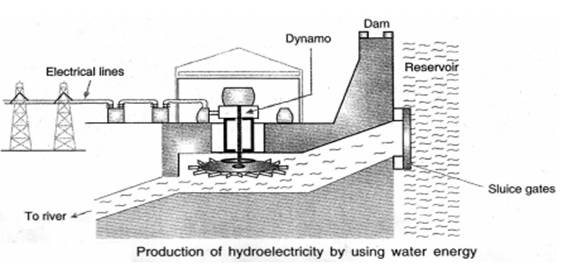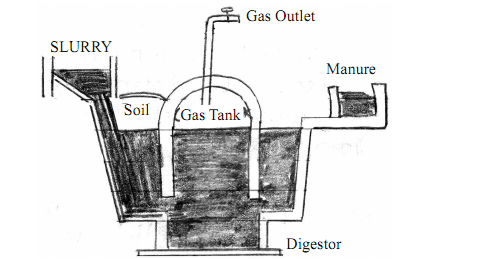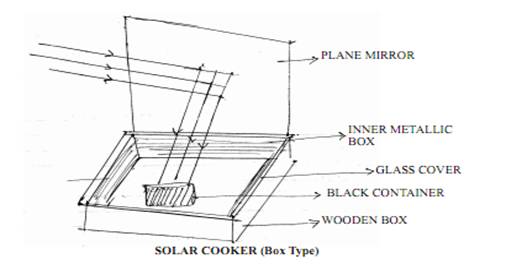
myCBSEguide App
Download the app to get CBSE Sample Papers 2024-25, NCERT Solutions (Revised), Most Important Questions, Previous Year Question Bank, Mock Tests, and Detailed Notes.
Install NowCBSE class 10 Science Chapter 14 Sources of Energy Current notes in PDF are available for free download in myCBSEguide mobile app. The best app for CBSE students now provides Sources of Energy Current class 10 Notes latest chapter wise notes for quick preparation of CBSE board exams and school based annual examinations. Class 10 Science notes on Chapter 14 Sources of Energy Current are also available for download in CBSE Guide website.
Sources of Energy Current class 10 Notes Science
CBSE guide notes are the comprehensive notes which covers the latest syllabus of CBSE and NCERT. It includes all the topics given in NCERT class 10 Science text book. Users can download CBSE guide quick revision notes from myCBSEguide mobile app and my CBSE guide website.
10 Science notes Chapter 14 Sources of Energy Current
Download CBSE class 10th revision notes for Chapter 14 Sources of Energy Current in PDF format for free. Download revision notes for Sources of Energy Current class 10 Notes and score high in exams. These are the Sources of Energy Current class 10 Notes prepared by team of expert teachers. The revision notes help you revise the whole chapter in minutes. Revising notes in exam days is on of the best tips recommended by teachers during exam days.
Revision Notes for Class 10 Science Download as PDF
CBSE Class 10 Science Revision Notes Chapter 14 Sources of Energy Current
- Energy comes in different forms and energy can only be converted from one form to another. For example if we drop a plate from a height, the potential energy of the plate is converted mostly to sound energy when it hits the ground.
- If we light a candle, the process is highly exothermic so that the chemical energy of the wax is converted into heat energy and light energy on burning.
A Good Source of Energy would be one
- which has high calorific value.
- be easily accessible.
- be easy to store and transport
- be economical.
- Intermediate Ignition temperature.
- Eco-friendly.
- Less combustible.

- Fossil fuels * Solar Energy
Eg. Coal & Petroleum. Solar Cooker, Solar Cell Panel
- Thermal Power Plant * Energy From the sea
- Hydro Power Plants Eg. Tidal & wave energy, O.T. Emergy
- Bio-Mass bio gas plant* Geothermal Energy
- Wind Energy * Nuclear Energy.
- Among the sources of energy, some of them get exhausted (Non-Renewable) While some of them do not get exhausted, therefore called as Renewable source of energy. Examples:
1. Non Renewable source of energy Coal, Petroleum, Natural Gas
- Air, Water, Solar radiation, Geothermal Energy, ocean waves etc.
Conventional Source of Energy
1. Fossil Fuels :Fuels developed from the fossils. e.g. Coal & Petroleum.
- Formed over million of years ago have only limited reserves
- These are non-renewable source of energy
- India has about 6% share in the world reserved coal, that may last 250 years more at the present rate of consumption.
Disadvantages of Burning Fossil Fuels
- Released oxides of Carbon, Nitrogen, Sulphur (acidic in nature)cause Air pollution & Acid rain & green-house effect.

A Model of Thermoelectric Production.
- The Tennis ball having three slits filled with semicircular (plaster or Metallic) tins is our Turbine for generating electricity. Actually the steam produced impart energy to rotor of turbine which can move shaft of the generator to produce electricity. A very large amount of fossil fuels are burnt in Thermal Power Plant to heat up water to produce steam.
- Hydro-power Plants convert the potential energy of falling water into Electricity since there are few water-falls which could becaused as a source of potential energy, hence this is the reason, a large number of dams are built all over the world.
- Around 25% of our country’s energy requirement is met by Hydro Power Plants

Dams are constructed to :
- Prevent flooding of river, provide water for irrigation & to generate hydroelectricity.
Disadvantages of construction of Big Dams
1. Submerging/Loss of large variety of Flora fauna and human settlements& rotting of submerged vegetation release green house gas ().
2. They pose dangers of earthquakes, landslides etc.
Improvements in the Technology for using Conventional sources of energy :
Biomass is Agricultural & animal wastes that can be used as a fuel. E.g. of Biomass – Firewood, cattle dung, sewage, dry leaves, stems.
- Normally biomass has low calorific value & produce lot of smoke when they are burnt. Their efficiency as a good fuel has been increased tremendously with the application of technology. For e.g. cow dung becomes efficient & cheap good fuel in a Bio-gas plant.
- Charcoal is better fuel than wood because it does not contain water & other volatile material which are present in wood.
Charcoal burns without smoke, flames & has high calorific value.
- Bio-gas is an excellent fuel & contains 75% of Methane ().It burns without smoke, leaves no residues like ash, with high heat capacity.
- Bio-gas is produced by anaerobic decomposition of the slurry(cow dung + water mixture) by microbes. This process is applied in a Bio gas plant.

- The Bio-gas is stored in the gas tank from which they are drawn through pipes for use in a Bio-gas plant
- Bio gas is used for lighting, cooking in the rural areas. While the slurry left behind is used as excellent manure, rich in nitrogen and phosphorous
- The large scale use of Bio-wastes & sewage material provide a safe and efficient method of waste-disposal besides supplying energy and manure.
WIND ENERGY
- Unequal heating of the landmass and water bodies by solar radiation generates air movement & causes winds to blow. This kinetic energy of the wind can be used to do work.
- This energy is utilised to lift water from the well & to generate electricity in the wind mill.
- Actually the rotatory motion of the windmill is used to turn the rotor of the turbine which then generate electricity through Dynamo.
- The output of a single windmill is quite small so a number of windmills are erected over a large area – called wind energy farm.
- India Ranked Fifth in the world in harnessing wind energy for the production of electricity. It is estimated that nearly 45,000 MW of electric power can be generated if
- India’s wind potential is fully exploited.
- The minimum wind speed for wind mill to serve as a source of energy is 20 KMPH.
Advantages of Wind Energy
1. Eco friendly
2. Efficient source of renewable energy.
3. No recurring expenses for production of electricity
Limitations of Wind Energy
1. Wind energy farms need large area of land
2. Difficulty in getting regular wind speed of 15-20 Km PH.
3. Initial cost of establishing wind energy farm is very high.
4. High level of maintenance of blades of wind mill.
Non-Conventional Sources of Energy
Solar Energy: The energy emitted by the sun in form of heat and light is called solar energy.
Solar Constant = 1.4 (kJ/s.m2)
Outer edge of the earth receives solar energy equal to 1.4 kJ/s.m2 which is known as solar constant.
Solar Energy Devices: A large number of devices that utilize solar energy directly like :
(i) Solar Cooker
(ii) Solar furnaces
(iii) Solar cells
(iv) Solar water heaters
Solar Heating Devices
- Use black painted surface because black surface absorbs more heat as compared to white or other surface.
- Use of glass plate because it allows shorter wave lengths infrared radiations to enter through it but doesn’t allow the infrared radiations to exit through it, causing more green House effect that results in increase in temperature.
SOLAR COOKER
Box Type Solar Cooker
- It consists of a rectangular box which is made up of material such as plastic or wood.
- Box is covered with black sheet and its inner walls are painted black to increase heat absorption.
- Solar cookers are covered with glass plate and have mirrors to focus the rays of the sun and achieve a higher temperature.

1. Use energy which is available in plenty (Solar Energy)
2. Is pollution free.
(i). Cannot be used for frying or baking purpose.
(ii). Food cannot be cooked at night or on a cloudy day.
(iii). Direction of reflector of solar heating has to be changed from time to time to keep it facing the sun.
SOLAR CELLS
- Solar cells are device that convert Solar energy into electricity.
- Develops a voltage of 0.5 – IV and can produce about 0.7 W of electricity.
Advantages of Solar Cell
- Require a little maintenance
- Have no moving part.
- No focusing device is required
- Can be set up in remote areas.
- Environment – friendly i.e. do not cause pollution.
Disadvantage of Solar Cells
1. It require high cost
2. Efficiency is low
3. Initial cost of installation is quite high.
Uses of Solar Cell
1. Used in calculators, watches etc.
2. Used in artificial satellites and space probes.
3. It is used in radio or wireless transmission system.
SOLAR PANEL
A large number of Solar Cells connected to each other in an arrangement is called solar panel.
Material used for Making Solar Cells
- Silicon
Silver is used for inter connection of cells.
ENERGY FROM THE SEA OR OCEAN: The energy from the sea is available in the following forms:
(i) Energy of sea waves
(ii) Tidal energy
iii) Ocean Thermal Energy.
(i) Energy of Sea Waves
- The waves are generated by the strong winds that blows across the sea.
- The kinetic energy of this moving water rotates the turbine of a generator
When strong winds stop blowing, the generator stops producing electricity
(ii) Tidal Energy
The tidal energy possessed by water during tides.
- The tides are caused due to gravitational force of attraction exerted by the moon on the water of the ocean.
- This form of energy is harnessed by constructing a dam across a narrow opening to the sea.
- A turbine fixed at the opening of the dam converts tidal energy to electricity.
(iii) Ocean Thermal Energy
The power plants used to harness the ocean thermal energy is known as “Ocean Thermal Energy Conversion Plant” (OTEC)
- Temperature difference between surface water and water at the depth of 2km should be 20°C or more.
- The warm surface water is used to boil ammonia (liquid)
- The vapours of the liquid are used to run the turbine of generator.
- The cold water (from deeper layers) is pumped up to condense the vapour into liquid.
Geothermal Energy
1. Energy stored as heat inside the earth
2. The steam of underground water is taken out by sinking pipes through holes drilled in the earth’s crust. The steam under high pressure is used to rotate the turbines of the generator to produce electricity.
NUCLEAR ENERGY
- Nuclear energy is the energy which is stored in the nucleus of an atom.
- Nuclear energy is of two types
- Nuclear fission nucleus of a heavy atom (Uranium) when bombarded with low
energy neutron split (break down) into lighter nuclei and huge amount of energy is released - Nuclear Fusion When two lighter nuclei join up to form heavy nucleus and tremendous amount of energy is released.
- Nuclear fission process is utilized in nuclear reactors to produce electricity.
- Major Nuclear power plants : Tarapur, Rana Pratap Sagar, Kalpakkam.
Advantages of Nuclear Energy
1. Large amount of energy is released.
2. In nuclear power plant, the nuclear fuel is inserted once to get energy over a long period of time.
Disadvantages of Nuclear Energy
1. High cost of installation.
2. Environmental contamination may occur due to improper nuclear waste disposal.
How long will energy source last: Continuous use of non-renewable source of energy is a matter of concern because ultimately the deposit of these sources will be completely finished on the other hand renewable sources of energy will last forever e.g sun as a source of energy will be available for a very long period of time.
CBSE Class 10 Revision Notes and Key Points
Sources of Energy Current class 10 Notes. CBSE quick revision note for Class-10 Science, Chemistry, Maths, Biology and other subject are very helpful to revise the whole syllabus during exam days. The revision notes covers all important formulas and concepts given in the chapter. Even if you wish to have an overview of a chapter, quick revision notes are here to do if for you. These notes will certainly save your time during stressful exam days.
Sources of Energy Current class 10 Notes Science
To download Sources of Energy Current class 10 Notes, sample paper for class 10 Mathematics, Social Science, Science, English Communicative; do check myCBSEguide app or website. myCBSEguide provides sample papers with solution, test papers for chapter-wise practice, NCERT solutions, NCERT Exemplar solutions, quick revision notes for ready reference, CBSE guess papers and CBSE important question papers. Sample Paper all are made available through the best app for CBSE students and myCBSEguide website.
- Chemical Reactions and Equations class 10 Notes Science
- Acids Bases and Salts class 10 Notes Science
- Metals and Non-metals class 10 Notes Science
- Carbon and its Compounds class 10 Notes Science
- Periodic Classification of Elements class 10 Notes Science
- Life Processes class 10 Notes Science
- Control and Coordination class 10 Notes Science
- How do Organisms Reproduce class 10 Notes Science
- Heredity and Evolution class 10 Notes Science
- Light Reflection and Refraction class 10 Notes Science
- Human Eye and Colourful World class 10 Notes Science
- Electricity class 10 Notes Science
- Magnetic Effects of Electric Current class 10 Notes Science
- Our Environment class 10 Notes Science
- Management of Natural Resources class 10 Notes Science

Test Generator
Create question paper PDF and online tests with your own name & logo in minutes.
Create Now
myCBSEguide
Question Bank, Mock Tests, Exam Papers, NCERT Solutions, Sample Papers, Notes
Install Now
Thank you ?
very nice and brief thank u
Helpful
all points of this chapter is present . very nice .
thank you
It helped me alot thanks for that
Nice
Good and was useful very much
Thanku so much
It is very useful to me.